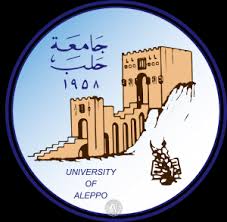اشترك بالحزمة الذهبية واحصل على وصول غير محدود شمرا أكاديميا
تسجيل مستخدم جديدRogue Waves in Ultracold Bosonic Seas
72
0
0.0
(
0
)
اسأل ChatGPT حول البحث

ﻻ يوجد ملخص باللغة العربية
In this work, we numerically consider the initial value problem for nonlinear Schrodinger (NLS) type models arising in the physics of ultracold boson gases, with generic Gaussian wavepacket initial data. The corresponding Gaussians width and, wherever relevant also its amplitude, serve as control parameters. First we explore the one-dimensional, standard NLS equation with general power law nonlinearity, in which large amplitude excitations reminiscent of Peregrine solitons or regular solitons appear to form, as the width of the relevant Gaussian is varied. Furthermore, the variation of the nonlinearity exponent aims at a first glimpse of the interplay between rogue or soliton formation and collapse features. The robustness of the main features to noise in the initial data is also confirmed. To better connect our study with the physics of atomic condensates, and explore the role of dimensionality effects, we also consider the nonpolynomial Schrodinger equation (NPSE), as well as the full three-dimensional NLS equation, and examine the degree to which relevant considerations generalize.
قيم البحث
اقرأ أيضاً
We present a theoretical study of extreme events occurring in phononic lattices. In particular, we focus on the formation of rogue or freak waves, which are characterized by their localization in both spatial and temporal domains. We consider two exa
mples. The first one is the prototypical nonlinear mass-spring system in the form of a homogeneous Fermi-Pasta-Ulam-Tsingou (FPUT) lattice with a polynomial potential. By deriving an approximation based on the nonlinear Schroedinger (NLS) equation, we are able to initialize the FPUT model using a suitably transformed Peregrine soliton solution of the NLS, obtaining dynamics that resembles a rogue wave on the FPUT lattice. We also show that Gaussian initial data can lead to dynamics featuring rogue wave for sufficiently wide Gaussians. The second example is a diatomic granular crystal exhibiting rogue wave like dynamics, which we also obtain through an NLS reduction and numerical simulations. The granular crystal (a chain of particles that interact elastically) is a widely studied system that lends itself to experimental studies. This study serves to illustrate the potential of such dynamical lattices towards the experimental observation of acoustic rogue waves.
Rogue waves are abnormally large waves which appear unexpectedly and have attracted considerable attention, particularly in recent years. The one space, one time (1+1) nonlinear Schrodinger equation is often used to model rogue waves; it is an envelo
pe description of plane waves and admits the so-called Pergerine and Kuznetov-Ma soliton solutions. However, in deep water waves and certain electromagnetic systems where there are two significant transverse dimensions, the 2+1 hyperbolic nonlinear Schrodinger equation is the appropriate wave envelope description. Here we show that these rogue wave solutions suffer from strong transverse instability at long and short frequencies. Moreover, the stability of the Peregrine soliton is found to coincide with that of the background plane wave. These results indicate that, when applicable, transverse dimensions must be taken into account when investigating rogue wave pheneomena.
Rogue waves appearing on deep water or in optical fibres are often modelled by certain breather solutions of the focusing nonlinear Schrodinger (fNLS) equation which are referred to as solitons on finite background (SFBs). A more general modelling of
rogue waves can be achieved via the consideration of multiphase, or finite-band, fNLS solutions of whom the standard SFBs and the structures forming due to their collisions represent particular, degenerate, cases. A generalised rogue wave notion then naturally enters as a large-amplitude localised coherent structure occurring within a finite-band fNLS solution. In this paper, we use the winding of real tori to show the mechanism of the appearance of such generalized rogue waves and derive an analytical criterion distinguishing finite-band potentials of the fNLS equation that exhibit generalised rogue waves.
In the present work, we explore soliton and rogue-like wave solutions in the transmission line analogue of a nonlinear left-handed metamaterial. The nonlinearity is expressed through a voltagedependent and symmetric capacitance motivated by the recen
tly developed ferroelectric barium strontium titanate (BST) thin film capacitor designs. We develop both the corresponding nonlinear dynamical lattice, as well as its reduction via a multiple scales expansion to a nonlinear Schrodinger (NLS) model for the envelope of a given carrier wave. The reduced model can feature either a focusing or a defocusing nonlinearity depending on the frequency (wavenumber) of the carrier. We then consider the robustness of different types of solitary waves of the reduced model within the original nonlinear left-handed medium. We find that both bright and dark solitons persist in a suitable parametric regime, where the reduction to the NLS is valid. Additionally, for suitable initial conditions, we observe a rogue wave type of behavior, that differs significantly from the classic Peregrine rogue wave evolution, including most notably the breakup of a single Peregrine-like pattern into solutions with multiple wave peaks. Finally, we touch upon the behavior of generalized members of the family of the Peregrine solitons, namely Akhmediev breathers and Kuznetsov-Ma solitons, and explore how these evolve in the left-handed transmission line.
A paradigm model of modern atom optics is studied, strongly interacting ultracold bosons in an optical lattice. This many-body system can be artificially opened in a controlled manner by modern experimental techniques. We present results based on a n
on-hermitian effective Hamiltonian whose quantum spectrum is analyzed. The direct access to the spectrum of the metastable many-body system allows us to easily identify relatively stable quantum states, corresponding to previously predicted solitonic many-body structures.
سجل دخول لتتمكن من نشر تعليقات
التعليقات
جاري جلب التعليقات


سجل دخول لتتمكن من متابعة معايير البحث التي قمت باختيارها


